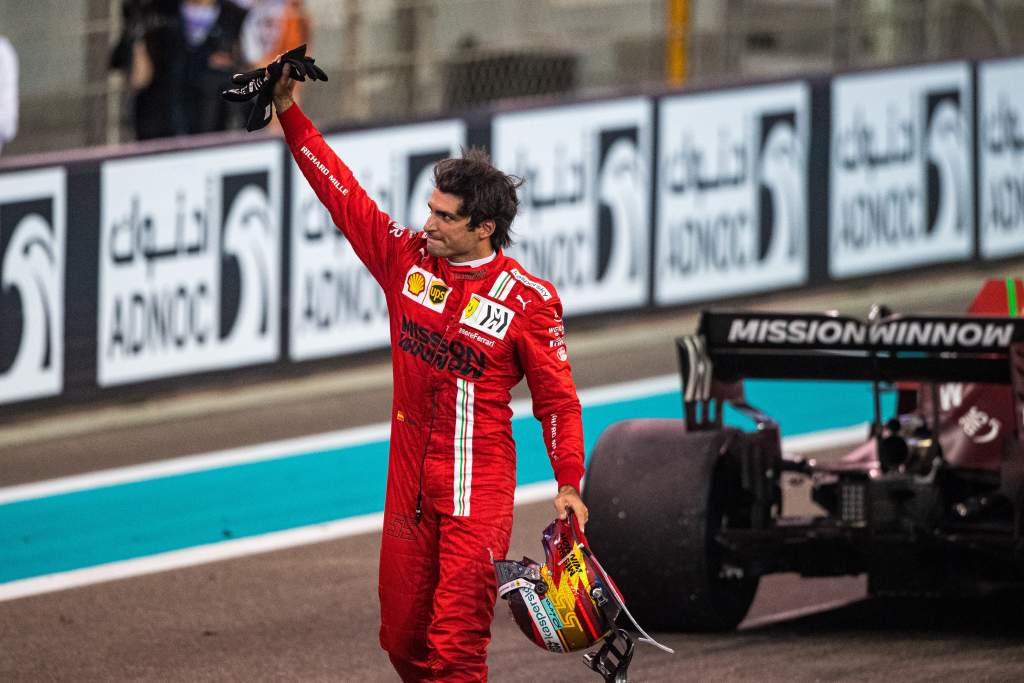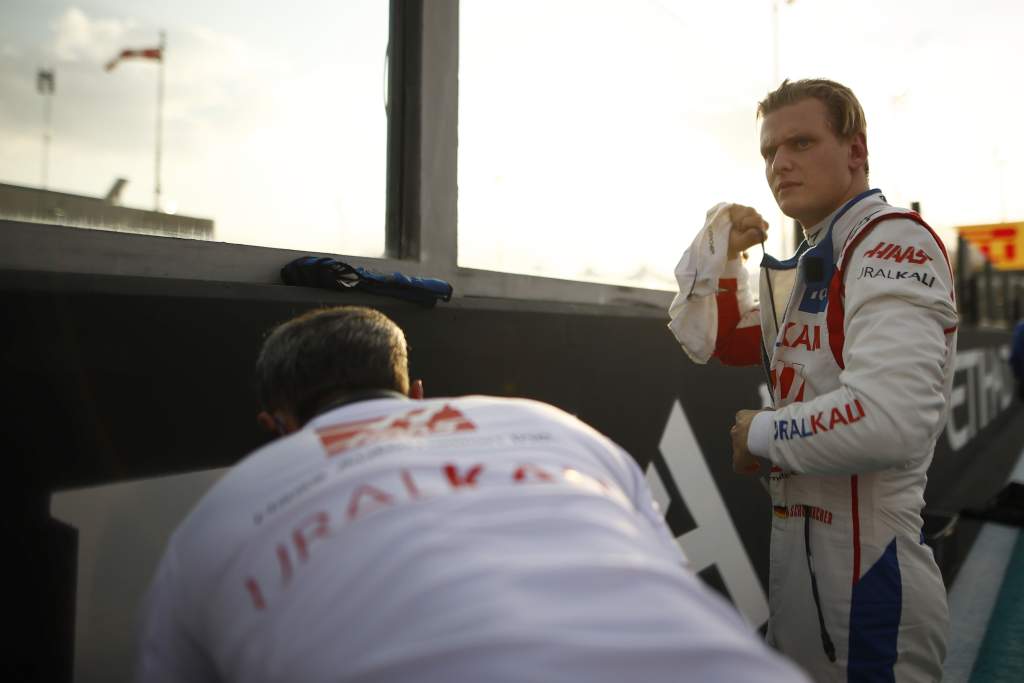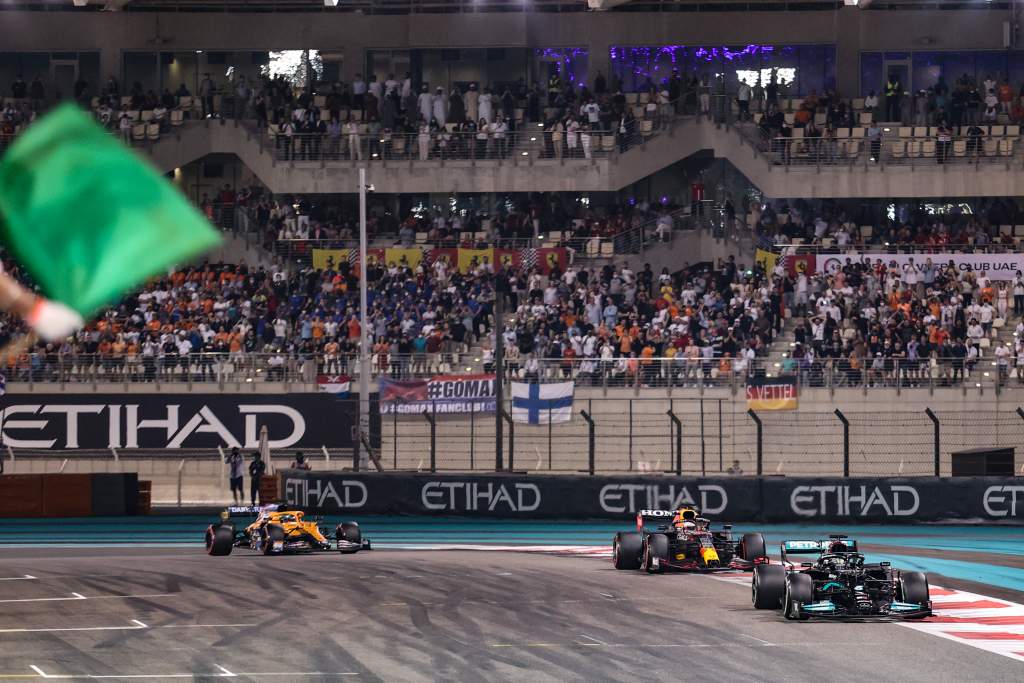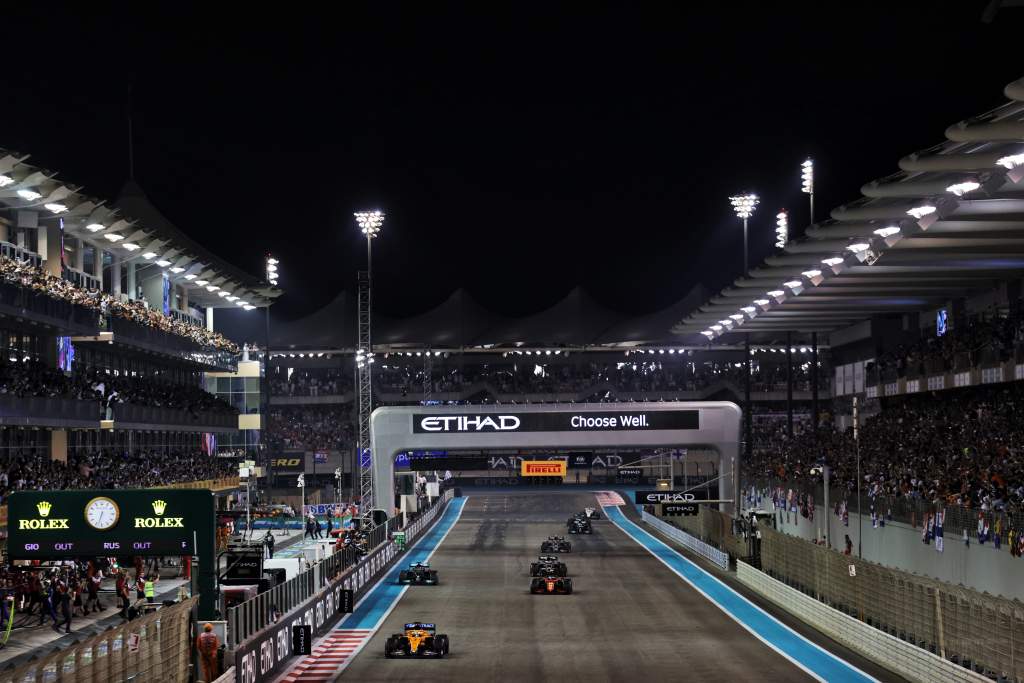Up Next

Lewis Hamilton and Max Verstappen might be the Formula 1 drivers most profoundly affected by the way the late Abu Dhabi Grand Prix restart was handled, but they were not the only ones to gain or lose.
The decision to let five drivers unlap themselves under the safety car – Lando Norris, Fernando Alonso, Esteban Ocon, Charles Leclerc and Sebastian Vettel – on the penultimate lap ahead of a last-lap restart had a fundamental impact on other aspects of the race, albeit when it comes to more trivial matters than the destiny of the drivers’ championship.
Moving those five cars out of the way closed up Hamilton and Verstappen, but as third-placed Carlos Sainz was behind Daniel Ricciardo and Lance Stroll, who remained a lap down, on the road he took the restart three seconds off the lead and therefore wasn’t afforded the same opportunity to attack as Hamilton was.
Sainz was on ageing hard tyres, having stopped on lap 19, and likely would have not been able to gain places, but this also showcases another problem with the process.

Likewise, there is also the case of Ricciardo, Stroll and Haas driver Mick Schumacher. They all stopped for fresh rubber under the late safety car and took the restart 12th, 13th and 14th respectively.
But unlike the cars running seventh to 11th, those three were not given chance to unlap themselves. So the cars Ricciardo, Stroll and Schumacher could have been attacking with their new tyres were isolated and out of reach, allowed past the safety car and away to chase a pack they’d never catch.
“We didn’t get a chance to follow the lapped cars,” said Stroll.
“We just didn’t really have any opportunity at the end.
“I was a little bit confused, but it’s fine.”
There’s every chance Ricciardo and Stroll might have gained places, while there is even an outside possibility that Schumacher could have used his extra grip to gain places and – with a perfect last lap and some luck – maybe attempt to grab a point.

As F1 works to tighten up the restart rules – something it has to do after what happened in Abu Dhabi – the effect on Hamilton and Verstappen isn’t the only one that needs to be considered.
You could argue that the situation with the battle between Verstappen and Hamilton was a one-off and therefore won’t arise again. That’s a very questionable argument in itself, but the fact other drivers and teams were impacted by what happened makes it undeniable that this situation needs to be made clear in the rules.
As Red Bull argued during the post-race stewards’ hearing, the reference in the regulations to “any” backmarker having to unlap themselves does not mean “all”. It might be intended to, but “any” is more imprecise so this is an area that needs clarifying. What matters is what the rules say, not what they were intended to say.
That could mean changing the wording to “all”, modifying the process – for example by dropping lapped cars to the back of the queue – or emphatically giving the race director power of discretion.
That said, the regulation stating that the safety car will pull into the pits at the end of the lap after lapped cars are released is clear cut. The problem there was the incorrect application of the sporting regulations, not what the wording or the claim that launching the restart procedure for lap 58 overruled the requirement not to do so at that point,
So either all of the lapped cars should have been sent round earlier, allowing the lap-58 restart and ensuring Sainz was with the top two, and that Ricciardo, Stroll and Schumacher were with the group ahead, or the restart should have happened with the backmarkers in place among the lead-lap cars.

Safety cars are a necessarily evil, and there’s no system that avoids some failing or some losing. Even in the case of a virtual safety car, gaps shift depending on the exact timing, so there is no way to prevent an impact. But it should be minimised, and use stipulated processes that are adhered to.
While the focus is inevitably on the championship, it’s essential the rules are scrutinised and tightened up to ensure any negative impacts of safety cars and the desire for a green-flag finish are avoidable.
There will be no perfect way to deal with moving lapped cars out of the way or to ensure a green-flag finish after a late interruption. There will always be winners and losers. But what happened in Abu Dhabi is a valuable case study that could lead to modifications for the future.




